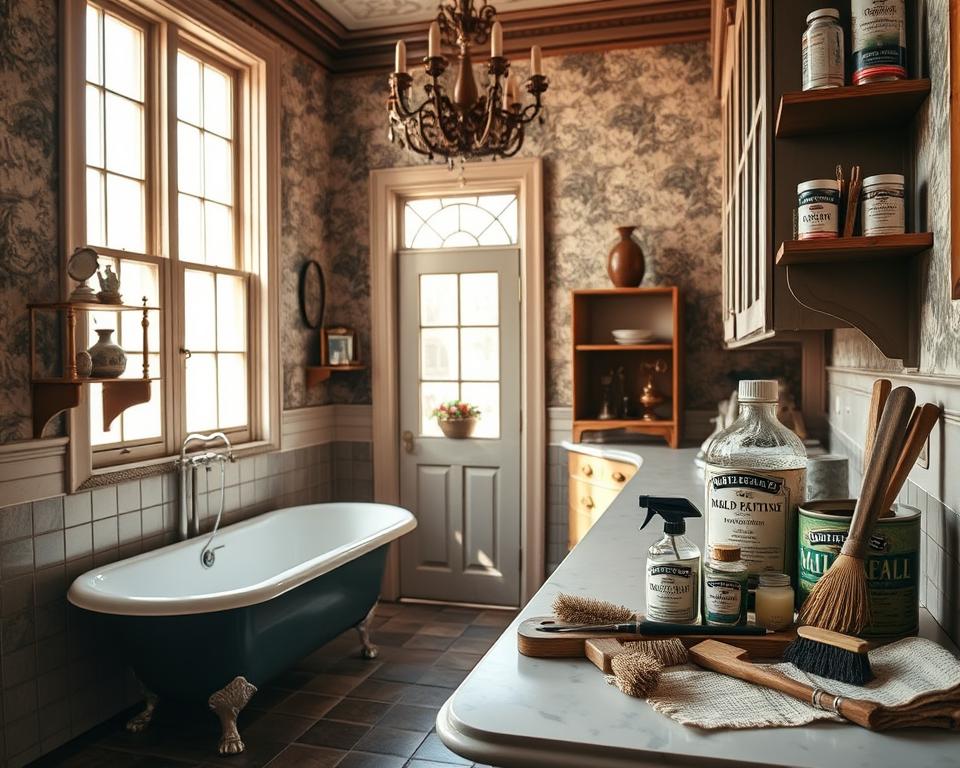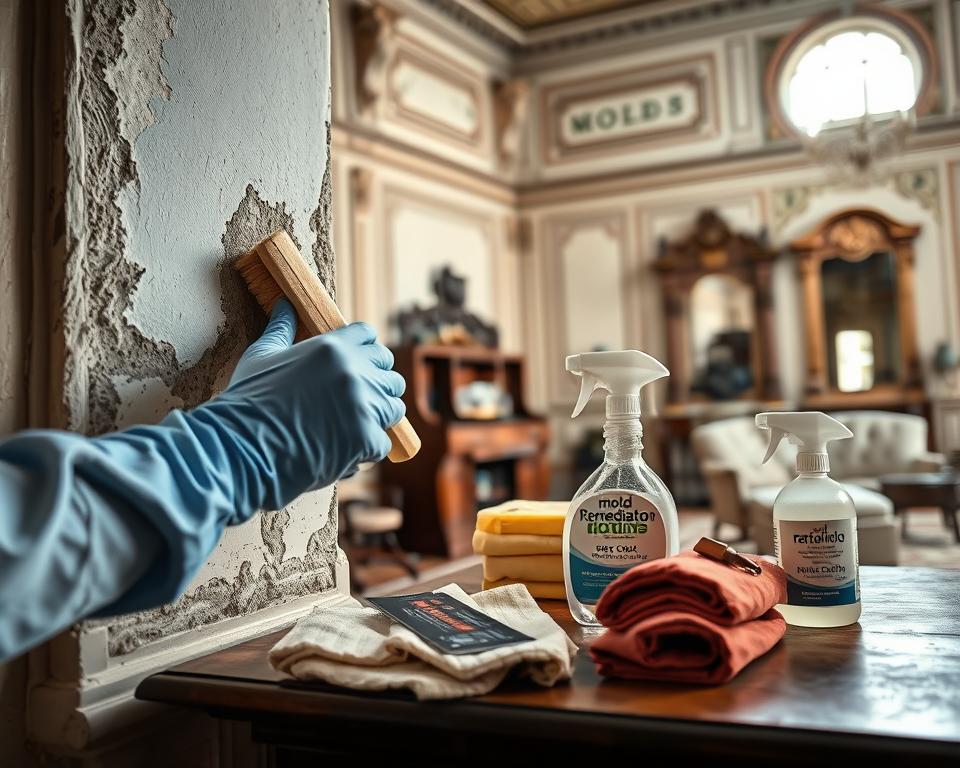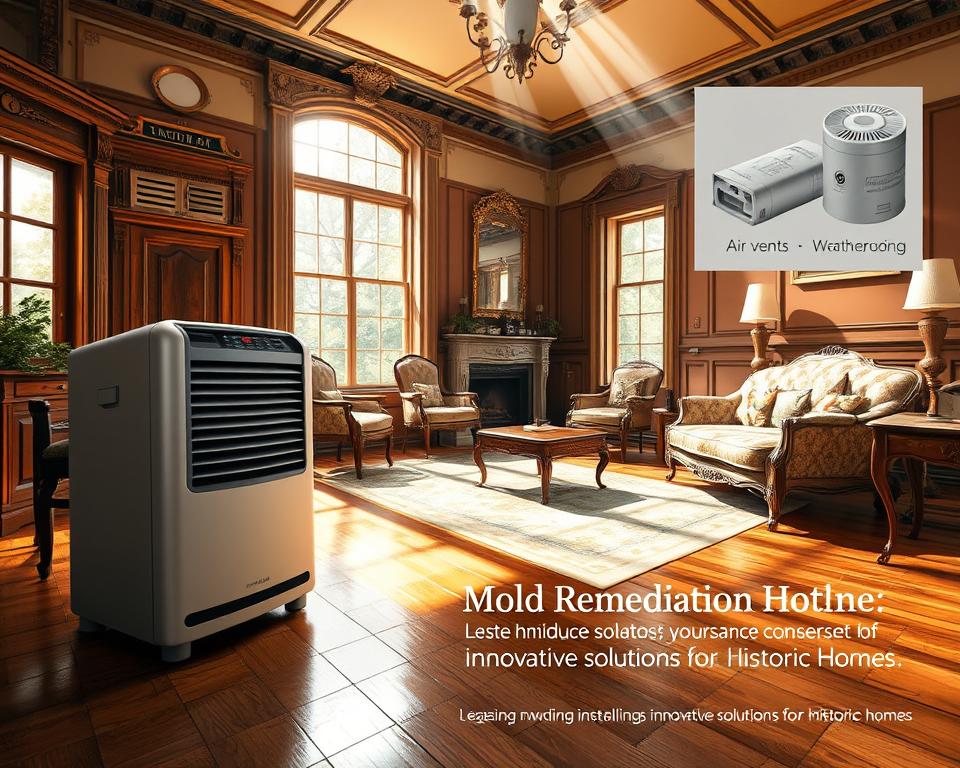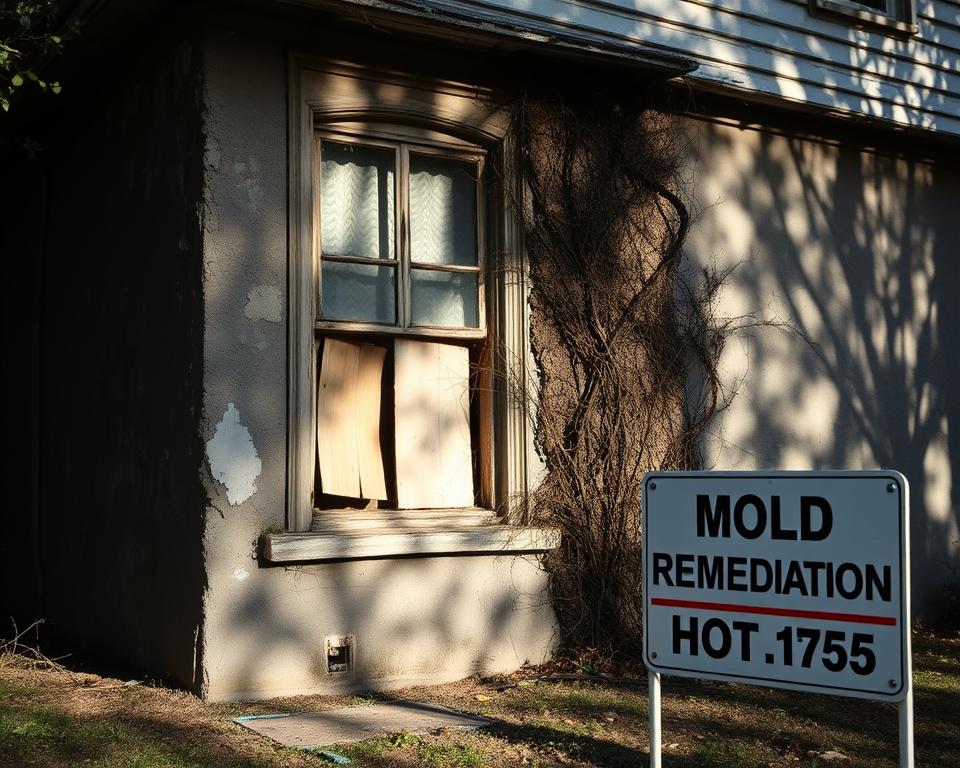Nearly 1 in 3 pre-1950 properties contain building materials that unknowingly feed microbial growth. These aging structures often harbor silent threats behind their original plaster walls and vintage woodwork, creating complex challenges for modern preservation.
Older residences demand specialized care due to their unique construction. Outdated ventilation systems trap moisture, while organic materials like horsehair plaster lack modern protective treatments. These factors create ideal conditions for spore proliferation – sometimes for decades before detection.
Health risks escalate when dealing with certain fungal varieties. Toxic strains can trigger severe respiratory complications, particularly in vulnerable individuals. Balancing structural preservation with occupant safety requires expertise in both historical architecture and microbial biology.
Key Takeaways
- Pre-1950 construction materials often lack modern moisture resistance
- Original architectural features can conceal hidden growth for years
- Specialized assessment preserves structural integrity during treatment
- Multiple spore types may coexist in older buildings
- Local preservation laws impact remediation strategies
Understanding Mold Risks in Historic Homes
Original construction materials in older dwellings create perfect storm conditions for microbial invaders. These buildings often feature tight spaces and organic components that trap moisture, creating invisible breeding grounds. Unique architectural details complicate detection, allowing biological growth to spread undetected for years.
Common Breeding Zones and Warning Signs
Moisture-rich zones like basement corners and attic rafters frequently host fungal colonies. Less obvious trouble spots include gaps behind original trim work and under hardwood floors. Key indicators include musty odors, warped wood, and discolored surfaces ranging from speckled orange to velvety black.
Vintage plumbing systems often leak slowly, feeding growth inside walls. Balloon framing techniques allow spores to travel between floors. Homeowners might find slimy residues near radiator pipes or fuzzy patches on century-old insulation.
Protecting Wellbeing During Investigations
Exposure to certain fungal species can trigger sneezing fits and persistent coughs. Toxic varieties like Stachybotrys chartarum (black mold) may cause severe headaches or skin irritation. Those with asthma often experience worsened symptoms in affected areas.
Safety measures become critical when dealing with pre-1950 properties. Protective masks should be worn during inspections to avoid inhaling particles. Always test surrounding materials for asbestos before disturbing suspicious growth near original plaster or insulation.
Mold Remediation for Historic Homes
Property stewards face critical choices when biological growth appears. The approach depends on contamination scope, material types, and preservation needs. One square foot makes all the difference – minor issues might allow owner intervention, while larger infestations demand expert handling.

When to DIY vs. Hiring Professionals
Small affected areas under 10 square feet on sealed surfaces may permit careful owner treatment. Use protective gear and gentle cleaners like diluted vinegar. However, stop immediately if original finishes show damage.
| Factor | DIY Approach | Professional Solution |
|---|---|---|
| Area Size | 10+ sq ft | |
| Materials | Non-porous surfaces | Delicate historic features |
| Cost Range | $20-$50 | $500-$5,000+ |
| Time Required | 2-4 hours | 3-7 days |
Effective Cleaning Solutions and Techniques
For permissible projects, mix 1 part hydrogen peroxide with 4 parts water. Test on hidden areas first. Soft-bristle brushes prevent surface scratches. Never use bleach on organic materials – it accelerates deterioration.
Porous substances like antique textiles require specialized dry methods. Professionals often employ controlled freezing or targeted airflow. This preserves structural integrity while eliminating spores.
DIY Mold Remediation Techniques for Historic Homes
Preserving architectural heritage requires careful handling when addressing microbial issues. Specialized methods balance thorough cleaning with material preservation, ensuring original features remain intact while eliminating unwanted growth.

Step-by-Step Cleaning Process
Begin by sealing the affected area with plastic sheeting. Wear gloves and an N-95 mask to limit exposure. Identify and fix moisture sources before treatment.
Mix one cup baking soda with two cups water to create a cleaning solution. Apply to surfaces using a soft brush. Let sit for 15 minutes before scrubbing gently.
Rinse treated wood with minimal water to prevent warping. Dry completely using fans directed toward open windows. Finish with HEPA vacuuming to capture loose particles.
Essential Tools and Protective Gear
Proper equipment safeguards both users and delicate materials. Use these items for safe, effective cleaning:
| Category | Essential Items | Alternatives |
|---|---|---|
| Protection | N-95 mask, goggles | Full-face respirator |
| Cleaning Tools | Soft-bristle brush | Microfiber cloth |
| Solutions | Baking soda mix | Vinegar solution |
| Containment | Plastic sheeting | Zipwall barriers |
After letting sit treatments dry, inspect surfaces under bright light. Repeat applications if discoloration persists. Proper air circulation remains critical throughout the process.
Preventive Measures and Long-Term Solutions
Over 60% of moisture issues in aged structures stem from outdated designs. Modern prevention methods must adapt to original layouts while stopping spore development. Strategic upgrades protect architectural value without compromising historical authenticity.

Addressing Water Damage and Moisture Control
Keep humidity below 50% using energy-efficient dehumidifiers. Install discreet exhaust fans in kitchens and bathrooms to improve airflow. Check plumbing joints monthly – a single drip can fuel hidden growth.
Efflorescence signals mineral deposits from persistent dampness. Scrub affected areas with stiff brushes and distilled water. Always dry surfaces completely within 24 hours. Avoid carpeting basement floors or placing organic storage materials directly on concrete.
Regular Maintenance and Inspection Strategies
Create seasonal checklists for critical zones:
- Roof valleys and gutters (clear debris quarterly)
- Window glazing putty (inspect annually)
- Crawl space vents (keep unblocked)
Use moisture meters to test hidden spaces between walls. Upgrade drainage systems with French drains that respect original landscaping. Consider wireless humidity sensors that blend with vintage interiors.
Proper ventilation remains crucial. Add subtle airflow channels in attic eaves rather than altering historic trim. Balance modern technology with preservation needs for lasting protection.
Conclusion
Preserving century-old structures demands vigilance against natural threats while maintaining their irreplaceable character. Microbial growth thrives where moisture meets organic materials, making prevention essential. Simple habits like running bathroom fans during showers and fixing leaks within 24 hours significantly reduce risks.
Regular inspections of basements and behind walls help catch issues early. Use moisture meters to monitor hidden areas and address musty odors immediately. Replace water-damaged wood promptly to prevent spores from spreading through ventilation systems.
Balancing thorough cleaning with preservation requires specialized knowledge. Professionals use techniques that protect original woodwork while eliminating colonies. For smaller issues, targeted solutions like baking soda mixtures can safely treat affected floors or surfaces.
This dual focus safeguards both respiratory health and architectural heritage. Consistent care ensures these timeless properties remain safe havens, honoring their past while securing their future.
